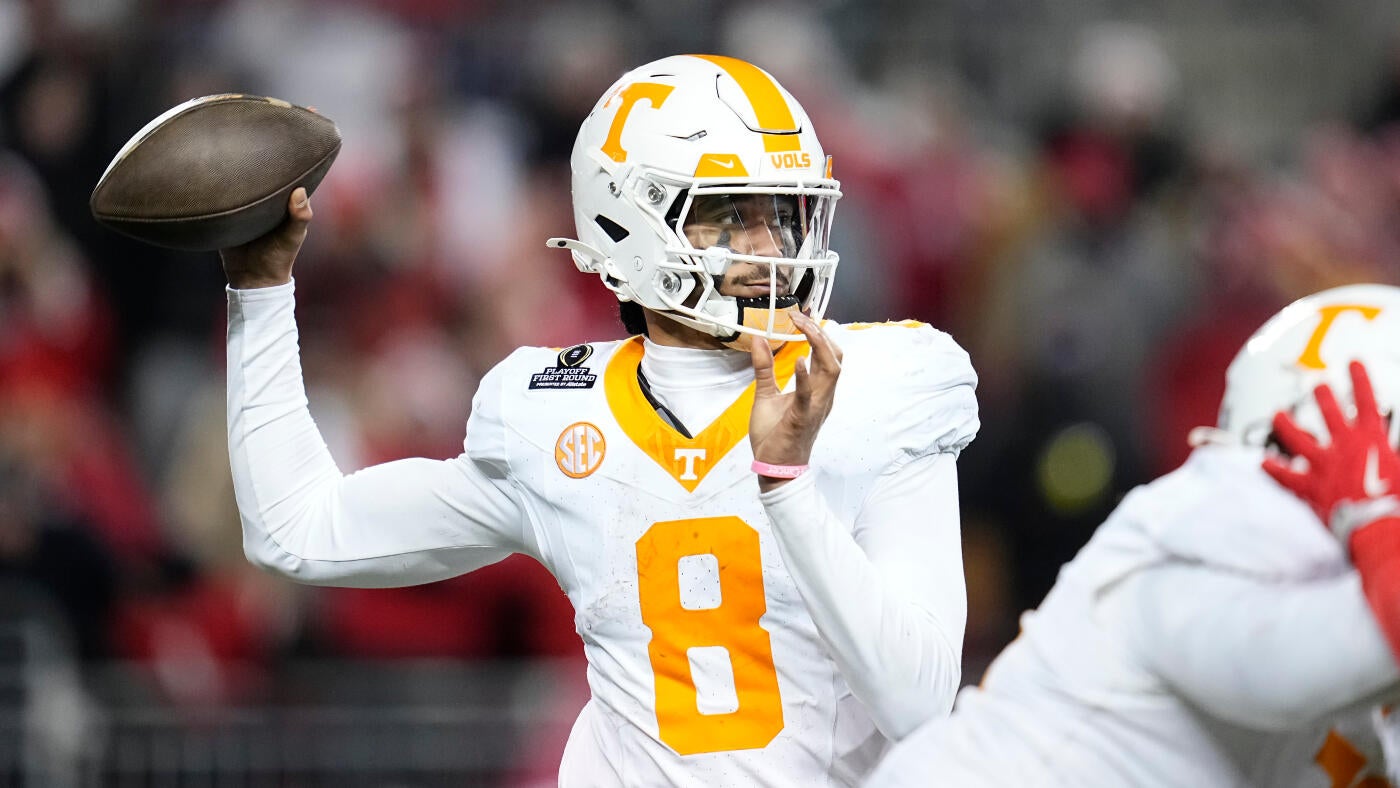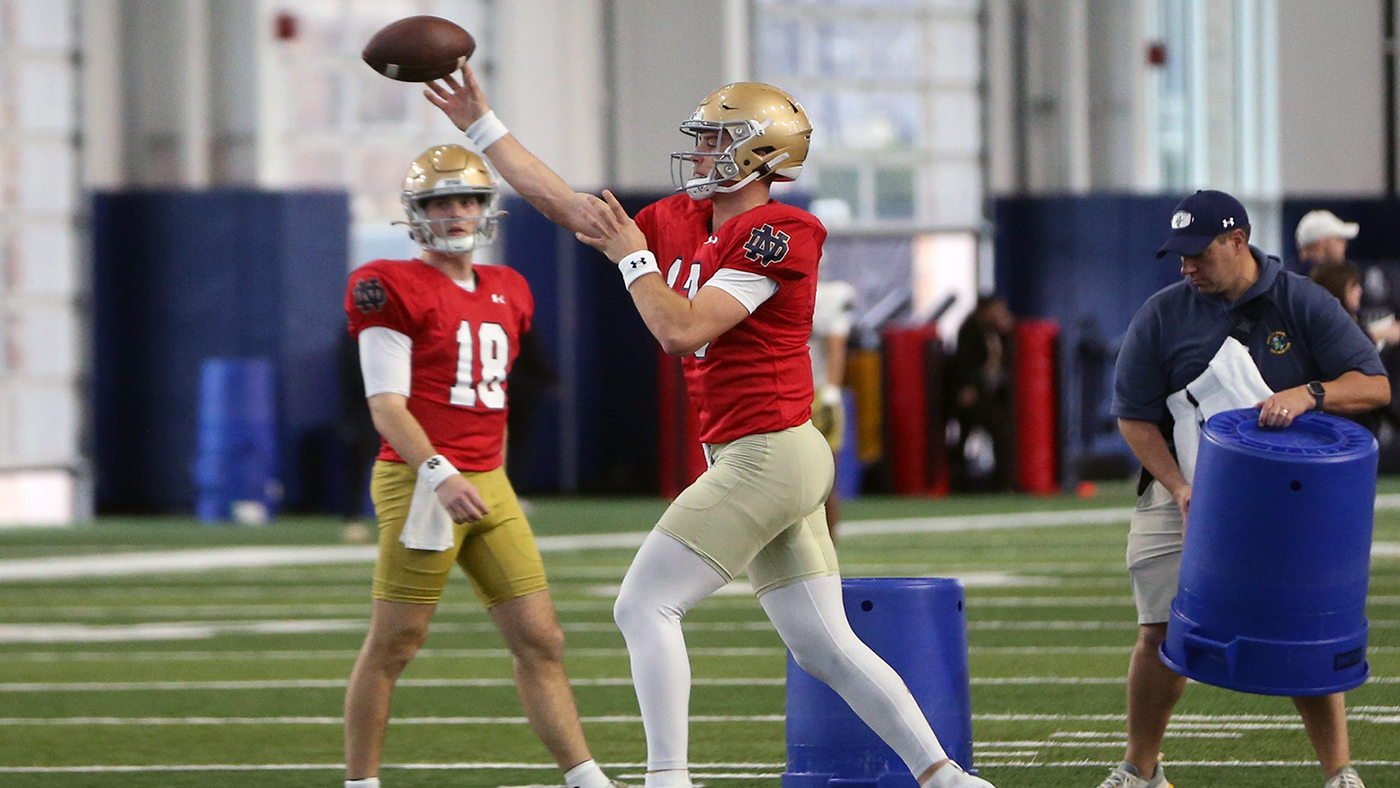Marcello's Mailbag: What will Notre Dame's defense look like under new coordinator Chris Ash?

Welcome to Marcello's Mailbag, where college football is always at the top of the pile. This is a safe space to share opinions and ask questions without fear or ridicule. No question is dumb, though you may believe there are dumb answers. Luckily, I'm willing to look like a jester, but more often than not, I'll fill your mind with the information you need to understand the most magical sport in the world.
Nico Iamaleava is out at Tennessee. The quarterback's negotiating tactics and holdout from practice prompted the Vols to cut bait and move forward without the multi-millionaire sophomore.
But was Iamaleava wrong for asking for more than his agreed-upon NIL salary (believed to be between $2.2-2.4 million)? No. The problem was how Iamaleava and his camp handled the situation -- purportedly not-so-quietly shopping his services to teams as his representation, led by his father, attempted to renegotiate his already-rich deal with the Vols.
Optics, trust and relationships are just as important as the bottom line. They go a long way in determining whether players receive what they deserve. There is no question that top-tier quarterbacks are worth more than $3 million in the new revenue-sharing era -- and that's without additional NIL dollars attached to marketing deals. Simple math and college football, which will soon replicate the NFL model, show us that much.
Consider the math. Top-tier quarterbacks in the NFL draw between 17% to 24% of the salary cap, with the likes of Dak Prescott and Joe Burrow representing the high-end numbers.
Starting in July, schools will spread roughly $15.375 million (75%) of their school-wide $20.5 million revenue-sharing cap across their 105-man football rosters. If college football teams replicate the NFL model, a "franchise" quarterback should expect to receive 20% of that salary pool, which is roughly $3.1 million.
So, yes, Iamaleava was in the right to ask for more money. While the particulars are shrouded in secrecy, it's believed his camp wanted more than $4 million. Is he worth it? That's to be determined by the market, and whether a team is desperate enough to shell out the dough for a quarterback that ranked in the middle of the SEC pack, but still led the Vols to a 10-win record and a spot in the CFP.
In the future, the market will settle itself. With the NFL as a touchstone, schools should expect to pay the best quarterbacks north of $3 million from their revenue pool. Outside NIL dollars will complement that salary and push the payout higher. But in the new model, NIL collectives will have to prove contracts of more than $600 meet specific criteria, bringing the days of pay-for-play NIL dollars to an end.
In some ways, a revenue-sharing mandate may act as a de facto salary cap in college football, with a few exceptions. In theory, NIL collectives will face more scrutiny when the power conferences launch their new governance structure to oversee revenue-sharing dollars. (We'll see if this new enforcement model has any teeth, as many doubt it.)
Agents and general managers should tread lightly in negotiations, but they should still use the NFL as a guiding light to help restore sanity to an overzealous collegiate model.
Still, I remain steadfast that the "market" will not be corralled until players come to the table for collective bargaining. That will likely take an act of Congress to codify, as the government must find a way to allow players to organize without calling them school employees. That is still likely several years away from as the feds will need to provide special classification to student-athletes that will undoubtedly face pushback in the legal system.
Iamaleava wasn't out of line asking for money, but how he navigated those stormy waters sent an alarming message across the sport. Players may have more power, but schools still have the final call.

Now to the Mailbag … before we're all sucked into the transfer portal Wednesday.
- NotreDale, Bluesky
That's a tough call. Notre Dame just wrapped up its best two-year defensive stretch this century (statistically speaking). Coaching only accounts for so much success; the most talented units are usually at the top. The Irish must replace the heart of the defense (linebacker Jack Kiser, All-American safety Xavier Watts, and defensive linemen Rylie Mills and Howard Cross III). While the well of talent is still deep, I expect a slight step back for a defense that finished in the top seven nationally in back-to-back years.
The Irish have the pieces to be a top-15 unit this fall, which is enough to compete for a playoff spot and contend for a title, but Chris Ash still needs to figure out many positions this summer.
Also, how much will Ash change Al Golden's scheme? Ash is known to mix up coverages, which means zone and some Cover 3 -- hallmarks during his time at Texas five years ago -- should resurface. Golden relied heavily on man coverage, a trademark some fans openly questioned after an Ohio State long ball iced the national championship game.
"Everybody in the country last year knew we were playing man every snap," returning safety Adon Shuler told reporters this spring. "(Playing zone) would help us be more versatile."
Ash is a fantastic coordinator, though much of his success as a play-caller happened a decade ago at Wisconsin and Ohio State. I'm interested to see how he's changed after four years in the NFL, where he coached safeties and certainly picked up new tricks.
Golden loved one-on-one matchups and challenging his players to deliver on an island, but Ash is more willing to mix things up. I'm more interested how Ash disguises blitzes and moves the defensive line, particularly one that needs some help on the edge this year.
In the Irish's most recent scrimmage, Ash's defense held the offense out of the end zone in four of seven trips inside the 20-yard line.
"We'll decide after spring and in the summer and fall camp what we'll hang our hats on," coach Marcus Freeman said this spring. "But I think it's been a commitment from Coach Ash, the whole defensive staff and myself on down to say, 'OK, let's continue to find ways to enhance the way we play zone.'"

- ppjccu2011, Bluesky
Tim Beck won eight games and the Hawaii Bowl in his first season. I'm not sure things are slipping at Coastal Carolina, even though they posted back-to-back 11-win seasons in 2020 and 2021. Get back to me if the Chanticleers win six games or less this fall.
But I understand your plight. Most Group of Five schools have become feeder systems for the power conferences. Coastal lost 39 players in the portal last winter and could lose a few more when it opens up again Wednesday. The Chants lost both coordinators and the quarterback position is up for grabs again, too. Grayson McCall is not walking through that door.
The Sun Belt is doing just fine, and closely resembles the SEC's little brother with the slew of new facilities and a strong commitment to football. It will remain relevant as long as there is some consistency year to year on the rosters. Unfortunately, success attracts the eyes of suitors and the big boys will continue to pick at the bones.
A Group of Five school needs a superstar to emerge at a skill position to challenge for a playoff spot. It's that simple. Ashton Jeanty provided Boise State just that in 2024. McCall provided Coastal with notoriety in 2020 and 2021.
The Sun Belt probably needs to follow the AAC's revenue sharing lead to help prevent the power teams from completely invading rosters. AAC teams must share a minimum of $10 million over three years. I'm not sure many Sun Belt teams could afford it, but something like $6 million during the same timeframe would be a nice start.
- Blasky, X
Are we so sure Sacramento State's application to transition from the FCS to the FBS will be approved? Most schools filing applications have sponsorship from an FBS conference. Sac State does not. The Hornets filed a waiver to join the FBS as an independent.
Let's not forget that Sac State just came off a 3-9 season and a last-place finish in the Big Sky, even though they won the conference in 2021 and 2022 with undefeated league records.
Usually the NCAA requires a school's football attendance to average 15,000, too. Sac State averaged 14,047 fans in 2024.
Still, Sac State apparently has a hive of money ready to unleash and a top-25 media market, so I expect the program to receive approval from the NCAA. The question is whether boosters raise the NIL funds to attract the type of players required to be successful in the FBS. Also, the school wants to join a conference, so immediate success as an independent is important.
I say all that to simplify and contradict the facts above: I'm a big believer in newly-hired coach Brennan Marion and his Go-Go Offense. I also believe he will attract high-quality athletes. My only question is whether the school's financial commitment lives up to the big talk (a group says they have raised $50 million in NIL funds).
Teams transitioning to the FBS usually need five years to reach a bowl game. That was in the old days. The process can be sped up with an influx of cash drawing talent to the school. We have no proof of concept at Sac State, just a lot of talk, so anything longer than five years should be chalked up as a disappointment.
Also, will Sacramento State's cash eventually coax the Pac-12 to invite the school as a football-only member? Again, we need receipts, not tweets.
- Gingers For Hershfelt, Bluesky
Avery Johnson was great, if not elite, in his first full year as a starter. His passer rating was in the middle of the road, but his duality made up for any inconsistency through the air. He finished with 32 total touchdowns and was one of only two quarterbacks in the country to throw for 2,500 yards and run for 525. He was downright electric at times, but turnovers plagued him. The Wildcats also lost three of four to finish the regular season.
He doesn't quite put the zip on the ball you'd like to see and he probably holds it too long (a byproduct of relying on his escapability), but he's still one of the top three quarterbacks in the Big 12. A lot of folks, including myself, are high on Baylor's Sawyer Robertson entering the season, particularly in that high-flying offense tailored to his strengths. So Johnson might not receive as much attention in the preseason as he is accustomed to.
Johnson was one of the nation's top 10 quarterbacks in the class of 2023 -- you know, the one with Arch Manning and Nico Iamaleava -- but he might be the best dual-threat signal caller of the group. I could argue he is the second-most successful quarterback in that class entering 2024. Still, he's in danger of falling behind his peers. UCLA's Dante Moore, and Manning enter their first full years as starters and Auburn's Jackson Arnold is looking for a big bounce back after a lousy year at Oklahoma.
Have a question? Email or tweet Brandon Marcello, and your question may be answered in the next edition of Marcello's Mailbag.
cbssports





